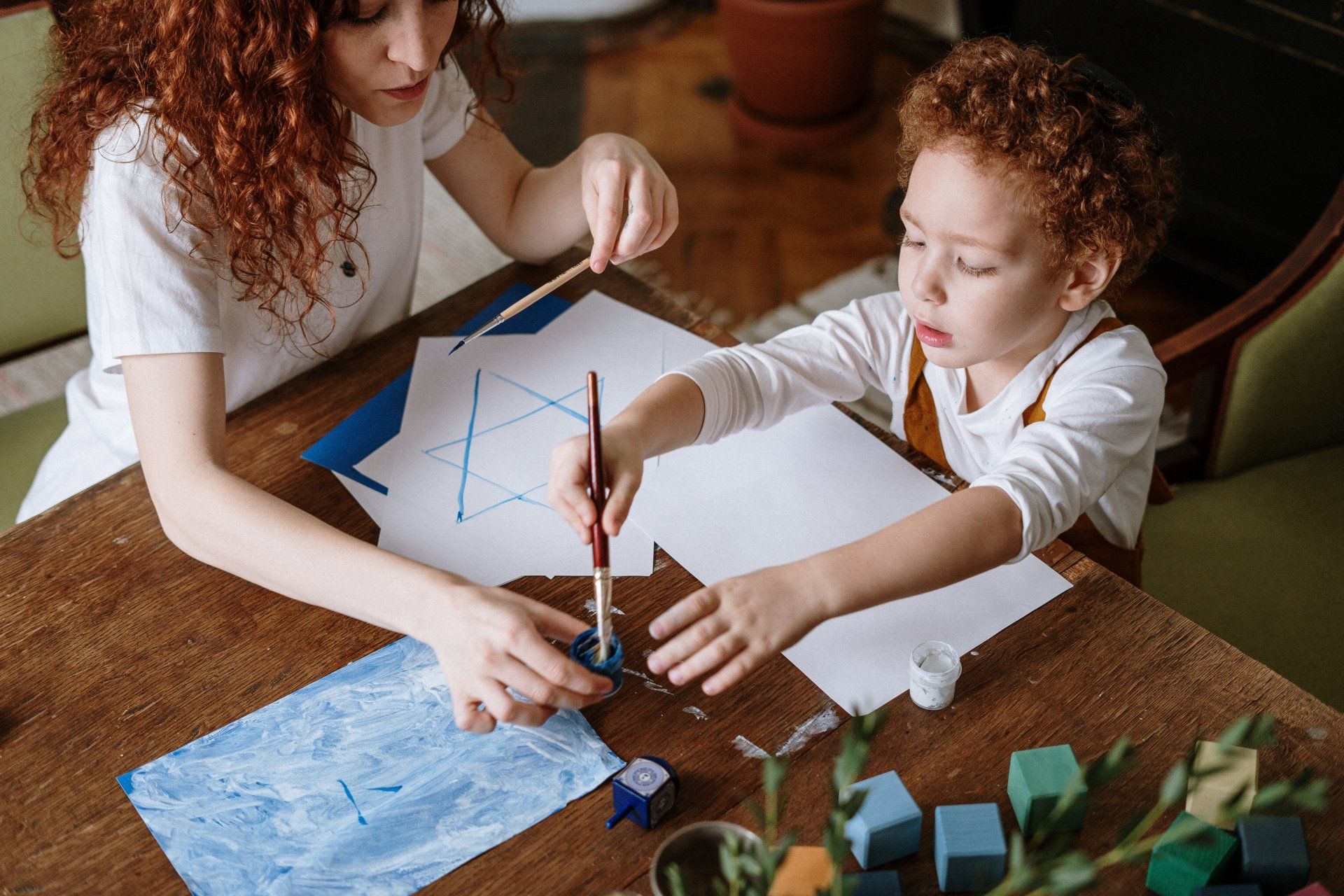Top Fun Outdoor Activities for Children: Learn and Play
Top Fun Outdoor Activities for Children: Learn and Play

In today's digital age, finding ways to get your children outdoors can be challenging, but the benefits of outdoor play are immense. Not only does it provide a much-needed break from screens, but it also fosters physical health, creativity, and social skills. This article will explore some fun outdoor activities for kids that are not only entertaining but also educational. By engaging in these activities, your children will learn about nature, develop important life skills, and create lasting memories.
The Benefits of Outdoor Play
Outdoor play is more than just a way for kids to burn off energy. It offers numerous benefits that contribute to their overall development and well-being. Here are some of the key advantages of encouraging your children to spend more time outdoors:
Physical Health
Engaging in outdoor activities helps children stay physically active, which is essential for their growth and development. Running, jumping, climbing, and other physical activities strengthen their muscles and bones, improve coordination and balance, and boost cardiovascular health. Outdoor play also exposes children to sunlight, which is a natural source of vitamin D, vital for healthy bone development.
Mental Well-being
Spending time outdoors has been shown to reduce stress, anxiety, and depression in children. Nature provides a calming environment that helps kids relax and unwind. Activities like hiking, playing in the park, or simply running around in an open space allow children to disconnect from the pressures of daily life and enjoy the present moment. This can lead to improved mood, better sleep, and a more positive outlook on life.
Social Skills Development
Outdoor play often involves group activities that encourage children to interact with their peers. Whether they are playing a team sport, participating in a group game, or simply exploring the outdoors together, children learn important social skills such as cooperation, communication, and problem-solving. These interactions help them build friendships, develop empathy, and learn how to work effectively as part of a team.
Practical Examples
1. Family Hikes: Take your family on regular hikes in local parks or nature reserves. Not only will this help your children stay active, but it will also provide opportunities for them to learn about different plants, animals, and ecosystems.
2. Playdates at the Park: Organise playdates at local parks where kids can engage in various physical activities like tag, hide and seek, or football. These playdates encourage social interaction and teamwork.
3. Community Sports: Enrol your children in local clubs such as football, tennis, swimming, gymnastics, or drama. These organised clubs provide structured physical activity and teach valuable lessons about teamwork and discipline.
Exploring Nature with Young Children
Exploring nature with young children is a wonderful way to ignite their curiosity and foster a love for the environment. Nature offers endless opportunities for learning and discovery, and these activities can be both fun and educational. Here are some engaging ways to explore nature with your little ones:
Nature Scavenger Hunts
One of the most exciting ways to engage children with nature is through scavenger hunts. Create a list of items for your kids to find, such as different types of leaves, rocks, flowers, or insects. This activity not only keeps them entertained but also teaches them to observe and appreciate the diversity of the natural world. It encourages critical thinking and sharpens their observational skills as they search for the listed items.
Observing Wildlife
Children are naturally fascinated by animals, and observing wildlife can be an exhilarating experience for them. Take your kids to local parks, nature reserves, or even your backyard or balcony to watch birds, squirrels, butterflies, and other creatures in their natural habitat. Equip them with a pair of binoculars and a field guide to help identify different species. This activity nurtures patience and a sense of wonder, and it can spark an interest in biology and conservation.
Learning About Plants and Trees
Another enriching outdoor activity is learning about plants and trees. Teach your children to identify different trees by their leaves, bark, and seeds. Show them how plants grow and explain the importance of photosynthesis in a simple and engaging way. You can also collect leaves, flowers, and seeds to create a nature journal, where your kids can document their findings and draw pictures of what they've discovered. This hands-on approach makes learning about botany enjoyable and memorable.
Practical Examples
1. Weekend Nature Walks: Dedicate a weekend to exploring a new trail or park. Bring along a checklist for a scavenger hunt and let your children tick off items as they find them. This turns a simple walk into an adventure.
2. Bird Watching: Set up a bird feeder in your backyard or use a window bird feeder and keep a log of the different species of birds that visit. Encourage your children to note the colours, sizes, and behaviours of the birds they see.
3. Botany Projects: Start a small garden and involve your children in planting seeds, watering plants, and observing their growth. Create a scrapbook where they can paste leaves and flowers, and write about their characteristics.
Joyful Gardening Activities for Children
Gardening is a delightful activity that can teach children valuable lessons about nature, patience, and responsibility. It provides a hands-on experience that is both fun and educational. Here are some joyful gardening activities that your kids will love:
Planting and Caring for a Garden
Getting kids involved in planting and caring for a garden is a fantastic way to teach them about the life cycle of plants. Start with simple, fast-growing plants like sunflowers, beans, or lettuce. Allow your children to dig holes, plant seeds, water the plants, and watch them grow. This activity not only teaches them about plant biology but also instills a sense of responsibility as they care for their growing garden.
Understanding the Growth Cycle
Gardening offers a practical way to understand the growth cycle of plants. Explain the different stages of plant growth – from seed germination to flowering and fruiting. Use a chart or a visual guide to illustrate these stages. Encourage your kids to observe and document the changes they see in their plants over time. This hands-on learning helps reinforce scientific concepts in a memorable way.
Harvesting and Enjoying the Produce
One of the most rewarding aspects of gardening is harvesting the produce. Let your children pick the fruits, vegetables, or flowers they have grown. This activity provides a tangible sense of accomplishment and allows them to enjoy the literal fruits of their labor. You can also involve them in preparing simple meals or snacks with the harvested produce, further enhancing their connection to the food they eat.
Practical Examples
1. Mini Herb Garden: Create a small herb garden in pots or a dedicated patch in your yard. Choose herbs that are easy to grow, like basil, mint, or parsley. Teach your children how to care for these herbs and use them in cooking.
2. Vegetable Patch: Dedicate a section of your garden to growing vegetables. Involve your kids in every step, from planting seeds to watering and weeding. As the vegetables grow, discuss their nutritional benefits and how they contribute to a healthy diet.
3. Flower Beds: Plant colourful flowers that bloom at different times of the year. This activity not only beautifies your garden but also teaches children about seasonal changes and the importance of pollinators like bees and butterflies.
Gardening Tips for Parents
Start Small: Begin with a small, manageable garden to keep your children engaged without overwhelming them.
Use Child-Friendly Tools: Provide kid-sized gardening tools to make the experience enjoyable and safe.
Make it Fun: Turn gardening into a game by setting goals, such as who can grow the tallest sunflower or the biggest pumpkin.
Encourage Creativity: Let your children decorate plant pots, create garden markers, and design their garden layout.
Conclusion
Outdoor activities offer a treasure trove of benefits for children, fostering their physical, mental, and social development. By encouraging kids to engage in outdoor play, explore nature, and participate in gardening, parents can provide enriching experiences that go beyond mere entertainment.
The activities highlighted in this article—whether it's the excitement of a nature scavenger hunt, the joy of observing wildlife, or the hands-on learning from gardening—are all designed to cultivate a deeper appreciation for the natural world. These experiences not only promote healthy growth and development but also instil a lifelong love for the outdoors.
As parents, embracing these outdoor activities with your children will not only strengthen your bond but also create cherished memories. So, take a step outside, explore, play, and grow together. The world is a vast playground, full of opportunities to learn and have fun—enjoy it!
FAQ
Q1: What are the benefits of outdoor play for children?
A1: Outdoor play helps children stay physically active, improves their mental well-being, and enhances their social skills. It promotes physical health by strengthening muscles and bones, reducing stress and anxiety, and fostering cooperation and communication through group activities.
Q2: How can I make nature exploration fun for my kids?
A2: You can make nature exploration fun by organising activities like nature scavenger hunts, wildlife observation with binoculars, and learning about plants and trees. These activities are engaging and educational, helping kids appreciate the natural world.
Q3: What are some easy plants for kids to grow in a garden?
A3: Some easy plants for kids to grow include sunflowers, beans, lettuce, basil, mint, and parsley. These plants are fast-growing and require simple care, making them perfect for young gardeners.
Q4: How can gardening be educational for children?
A4: Gardening teaches children about the life cycle of plants, the importance of photosynthesis, and the stages of plant growth. It also instills responsibility as they care for their garden and provides practical lessons in botany and environmental science.
Q5: How can I encourage my child to spend more time outdoors?
A5:Encourage your child to spend more time outdoors by making outdoor activities fun and engaging. Plan family hikes, organise playdates at the park, enrol them in community sports, and involve them in gardening projects. Creating a positive and enjoyable outdoor experience will motivate them to explore and play outside more often.

















